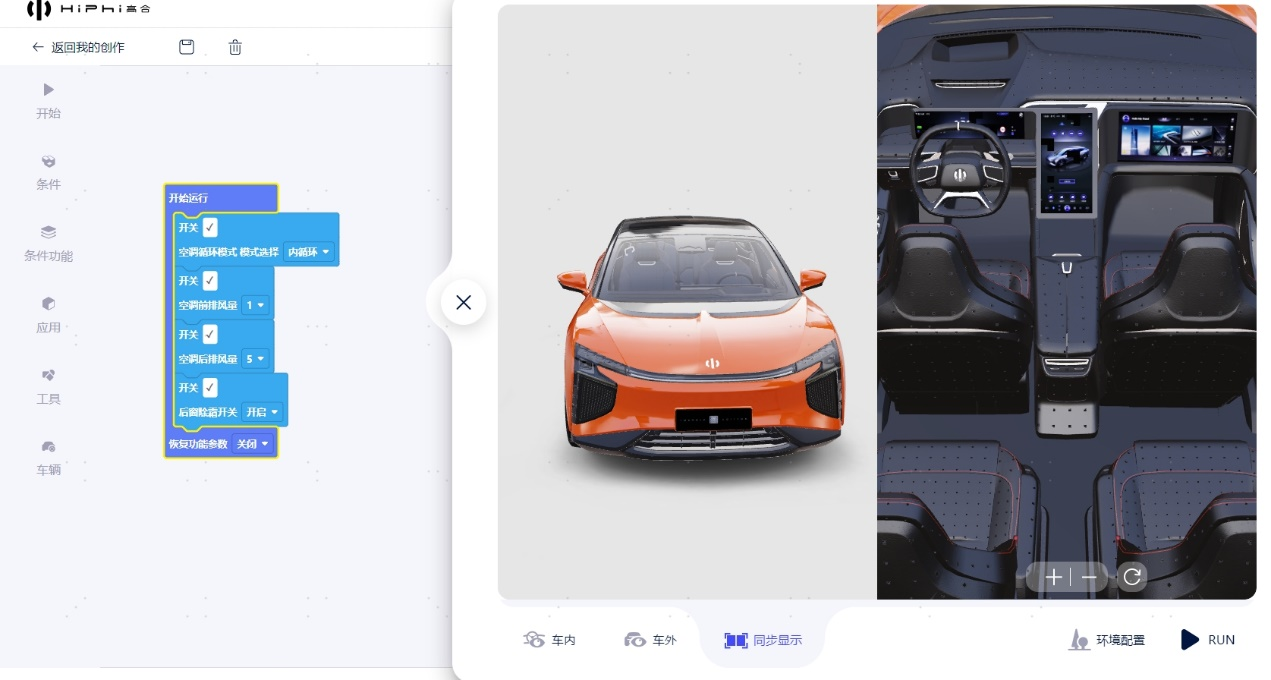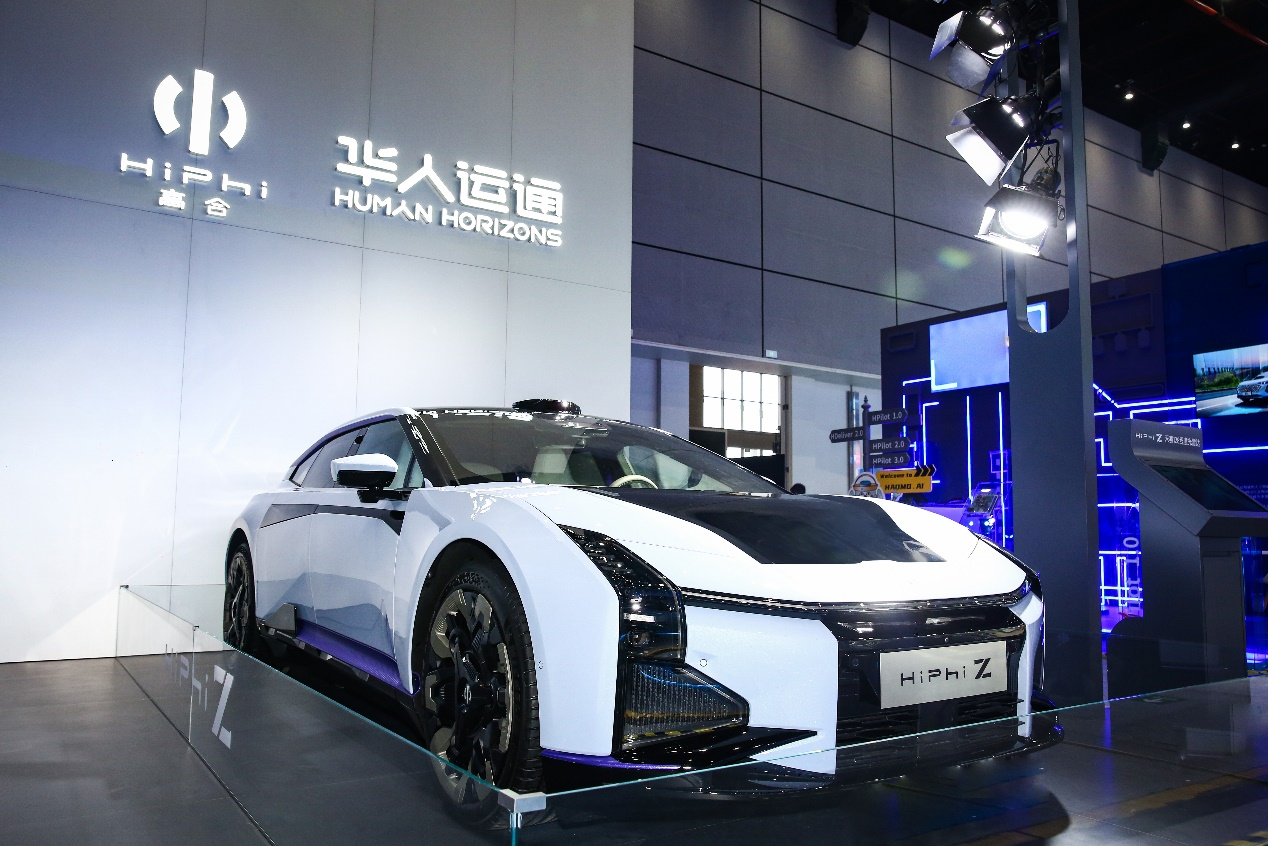Author: Issue 3
In addition to creating exciting and inspiring whole vehicle products, Gaohe Automobile has also been continuously cultivating in the field of intelligence.
On September 1st, the 5th World Artificial Intelligence Conference was held in Shanghai, in which Chinese automaker, GAC Group, was the only participating car company. On September 2nd, at the AI Summit of the conference, GAC Group’s Gaohe Automobile held a press conference and officially launched its new technology platform, HiPhi Developer.
In the era of intelligent automobiles, the number of automobile functions has exploded. However, Gaohe Automobile believes that one extreme scenario experience is better than 100 functions. The “Scenario Intelligence” built by HiPhi Developer provides a new way of thinking for the industry in function development and may become an important solution for future traveling.
After the press conference, we interviewed Dr. Li Qian, Vice President of Intelligent Vehicles at Gaohe Automobile under GAC Group. According to him, Gaohe Automobile launched HiPhi Developer, hoping to build an ecosystem. The scenario card is similar to the well-known APP ecosystem, like a smart phone ecosystem.
In terms of creating an ecosystem for intelligent electric vehicles, Gaohe Automobile has gone further than expected.
H-SOA: The Foundation of the Ecosystem
Leading is never a one-step process, but rather comes from forward-thinking strategic planning and firm and persistent attitudes.
Both the previous editor HiPhi Play and the new creator platform HiPhi Developer are derived from the H-SOA super body electronic and electrical architecture. In other words, H-SOA is the foundation of Gaohe Automobile’s ecosystem.
As early as October 2018, GAC Group announced its Three Intelligence Strategy and launched the Hyperconnected Intelligent Architecture (HOA), which is the precursor of H-SOA.
Gaohe Automobile stated that H-SOA is the world’s first open, service-oriented electronic and electrical architecture that can take advantage of intelligent hardware and build the foundation of intelligent vehicles.
Currently, car companies always mention intelligence. However, intelligent core is to provide services, not to show off, and this service needs to be generated and iterated rapidly. Otherwise, it will be meaningless. Traditional electrical and electronic architectures cannot achieve this, so Gaohe has been committed to the development of H-SOA architecture for a long time.
According to reports, the H-SOA architecture has six computing platforms, gigabit Ethernet, and developed software middleware to achieve the separation of software and hardware.In addition, H-SOA also provides open interfaces and development tools, allowing partners, third-party developers, and users to invoke the functions of various hardware and recombine them to develop a variety of intelligent vehicle applications, providing users with a powerful and continuously evolving application ecosystem and co-creating defined value.
According to GAC, H-SOA allows cars to be like Apple’s iPhone, allowing more than 500 sensors and more than 300 electronic control actuators to be maximally invoked through apps for function recombination and invocation, thereby developing a large number of intelligent vehicle applications to adapt to more usage scenarios, and even create brand new usage scenarios.

HiPhi Developer launches; a prototype of GAC’s smart ecosystem
If H-SOA is described as a system, then HiPhi Developer is a platform.
According to GAC’s definition, HiPhi Developer is a more open intelligent scenario co-creation platform based on the H-SOA architecture, called the “Creator Platform,” which includes professional editors such as HiPhi Play and HiPhi Show.
According to Li Qian, GAC has been conceiving HiPhi Developer since 2018 and developed it by the end of 2020. It has been almost two years since its official release.
The reason for the delayed release, according to Li Qian, is mainly due to the platform’s reliability and better user experience.
On the HiPhi Developer platform, users can perform graphical programming using tablet or PC on the web end. By dragging and combining functional modules, one can generate a dedicated shortcut vehicle function command or custom HiPhi Show, thereby connecting the three intelligent terminals of mobile, PC, and in-car.

In terms of actual operation, HiPhi Developer provides a “what you see is what you get” online simulation and testing environment, allowing real-time cloud-based remote virtual simulation testing of the entire cockpit process. It also includes a rich collection of official templates to enhance users’ creativity.
Previously, HiPhi Developer was mainly used by GAC and some users. GAC announced that it will expand its service audience to the outside world.#Translation
Gaohe Motors said that opening up to the crowd implies breaking the traditional user boundaries of the car industry and redefining the rules.
I asked Li Qian why Gaohe Motors made the decision to develop this platform, and he gave an example of Nokia and Apple phones.
Li Qian said that Apple’s advantage over Nokia is not its quality, but its open platform. When iPhone 1.0 was released, there were only about 14 APPs, a small number. But how many APPs are there on this phone today? There are more than 2 million, not developed by phone manufacturers, not by Apple, not by Huawei, but by some ecological cooperative partners, even users themselves.
Li Qian continued that users understand their own needs, and they will design and develop corresponding functions according to their needs. It has no practical meaning for automakers to cram all kinds of functions into the mainframe.
Gaohe Motors said HiPhi Developer’s release means that the industry has transitioned from “manufacturer-provided” to “user-created”, leading to a transfer of production relations and improved production efficiency.
It is reported that compared with traditional vehicle system upgrades, it takes several months to launch a scene function and organizational coordination among several suppliers for a HiPhi Show. The two co-created products of HiPhi Play and HiPhi Show created using HiPhi Developer can quickly complete the production of scene functions. This significantly reduces the time cost of function development, speeds up product iteration, and also saves time for users waiting for new functions to be launched.
Atomic Ability, The Smallest Programming Unit
Atomic ability, this is the smallest unit for programming on the HiPhi Developer platform. According to Gaohe Motors’ definition, it is a car functional unit service that users can adjust.
Simply put, users can build a scene card by building atomic abilities, which can also be understood as modular editing of car functions.
It is reported that after H-SOA decouples hardware and software, it can activate nearly 30 modules of the entire vehicle, more than 500 sensors, and more than 300 actuators. Finally, the number of atomic abilities that can be opened to users exceeds 140.
Gaohe Motors said that the number of atomic abilities signifies the degree of function opening.
Regarding the security of constructing scene cards using atomic abilities, Li Qian said that the application construction carried out by users is based on the software foundation, which has been tested by Gaohe Motors, so there is no need to worry about the security of user function development.
Over 5000+ Scene Cards
The so-called scene cards contain different numbers (2 or more functions) and exist in the form of “cards” on the car screen, and can be called by users.Currently, Gaohe Auto has accumulated more than 5000 scene cards and attracted over 1500 users to participate in co-creating them.
According to Li Qian, 90% of these 5000+ scene cards were made by users.
The reason why Gaohe Auto developed scene cards in addition to basic functions is that they believe one ultimate scene experience is better than 100 different functions. For example, let’s compare two scene cards.
The first is a winter commute mode where the vehicle can complete 11 car functions such as automatic door opening, seat heating, steering wheel heating, defrosting, and navigation.
The second is called “Forest Oxygen Bar” which opens the left and right wing doors, reclines the driver and passenger seats, and plays natural scenes to create an immersive environment.
Clearly, clicking on a scene card is much more efficient than clicking on each individual function of the car.
According to Gaohe Auto’s estimation, if you save 30 seconds per scene card, the company has saved users more than 14,000 hours, which is equivalent to watching 7000 two-hour movies.
The special feature of a scene card is that it is not only convenient to build but also covers most of life’s needs, reaching a usage rate of 70%.
Currently, these 5000+ scene cards have been used more than 1.7 million times with 130,000 downloads.
Why can Gaohe Auto create so many scene cards?
We are not unfamiliar with scene cards in other car models such as the WM W6, Xpeng P5 and other new generation intelligent electric vehicles. However, the difference is that other models may only have a few scene cards.
So, is the number of scene cards related to the level of intelligence of the car enterprise?
Regarding scene cards from other car companies, Li Qian said that initially IM was recruiting developers, but at that time IM did not have a product, and the IM (scene card) concept was highly similar to Gaohe Auto. Gaohe Auto already has mass-produced cars, and the system has been tested for nearly two years.
Li Qian also mentioned that the vehicle architecture of other models has not yet completed the layering and atomization, so they cannot create too many scene cards or interesting things compared to Gaohe Auto’s fully-layered architecture that is completely decoupled from the top-level application software and the bottom-level platform hardware and software.## Final Thoughts
Currently, phrases such as “software-defined cars” have been widely circulated within the industry, demonstrating the importance that automakers place on intelligence. At the beginning of the brand’s establishment, Human Horizons foresightedly designated intelligence as one of the brand’s core development areas, with the “three intelligences” being exceedingly well-known within the industry.
The release of the HiPhi Developer Creator Platform has refreshed our understanding of Gaohe Automobile’s intelligent layout, as when other automakers were still focusing entirely on basic functionality, Gaohe Automobile had already entered the “higher level” of scenario-based thinking, whilst also attempting to be more externally focused, to build a complete industry eco-system.
Of course, there are no pre-existing examples for Gaohe to reference, and there will undoubtedly be significant challenges ahead. However, only by continued exploration and creation can Gaohe succeed.
This article is a translation by ChatGPT of a Chinese report from 42HOW. If you have any questions about it, please email bd@42how.com.
